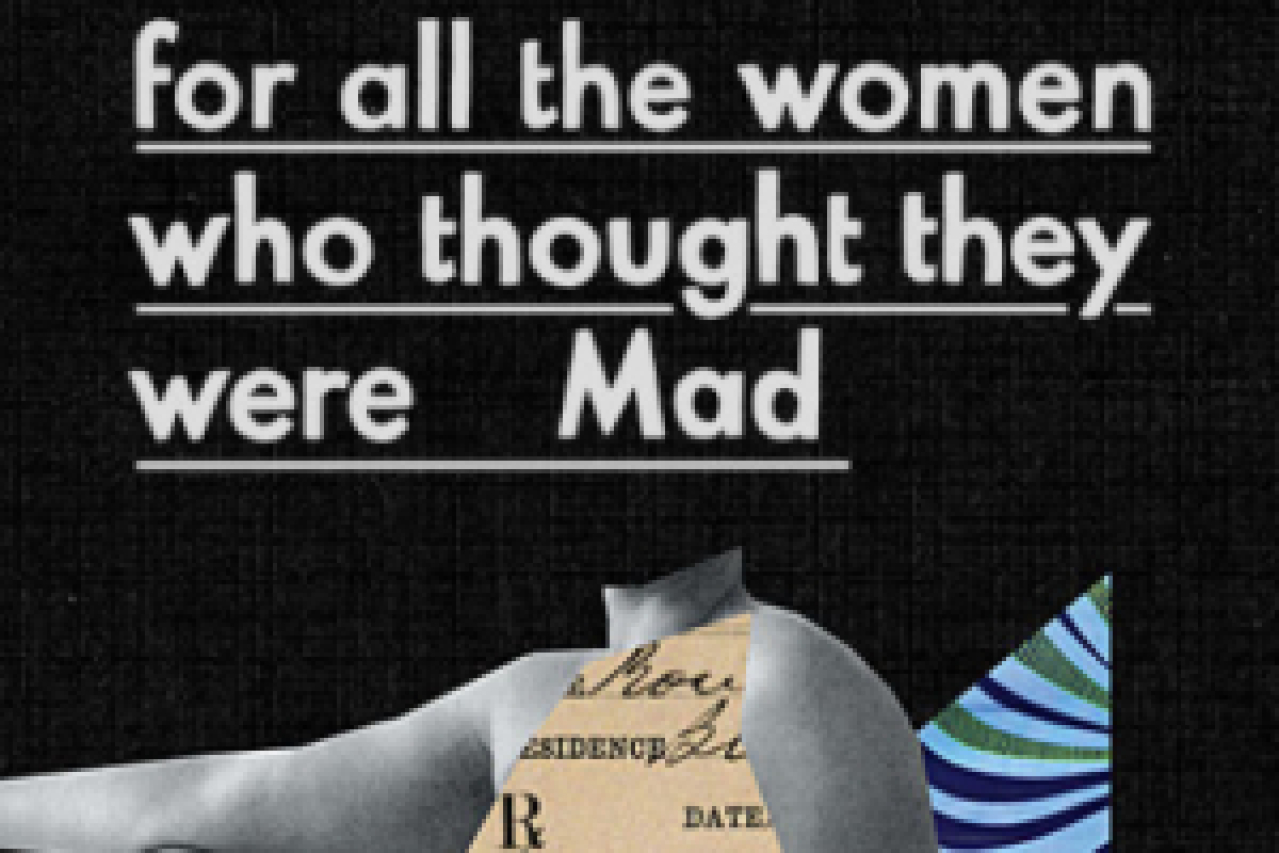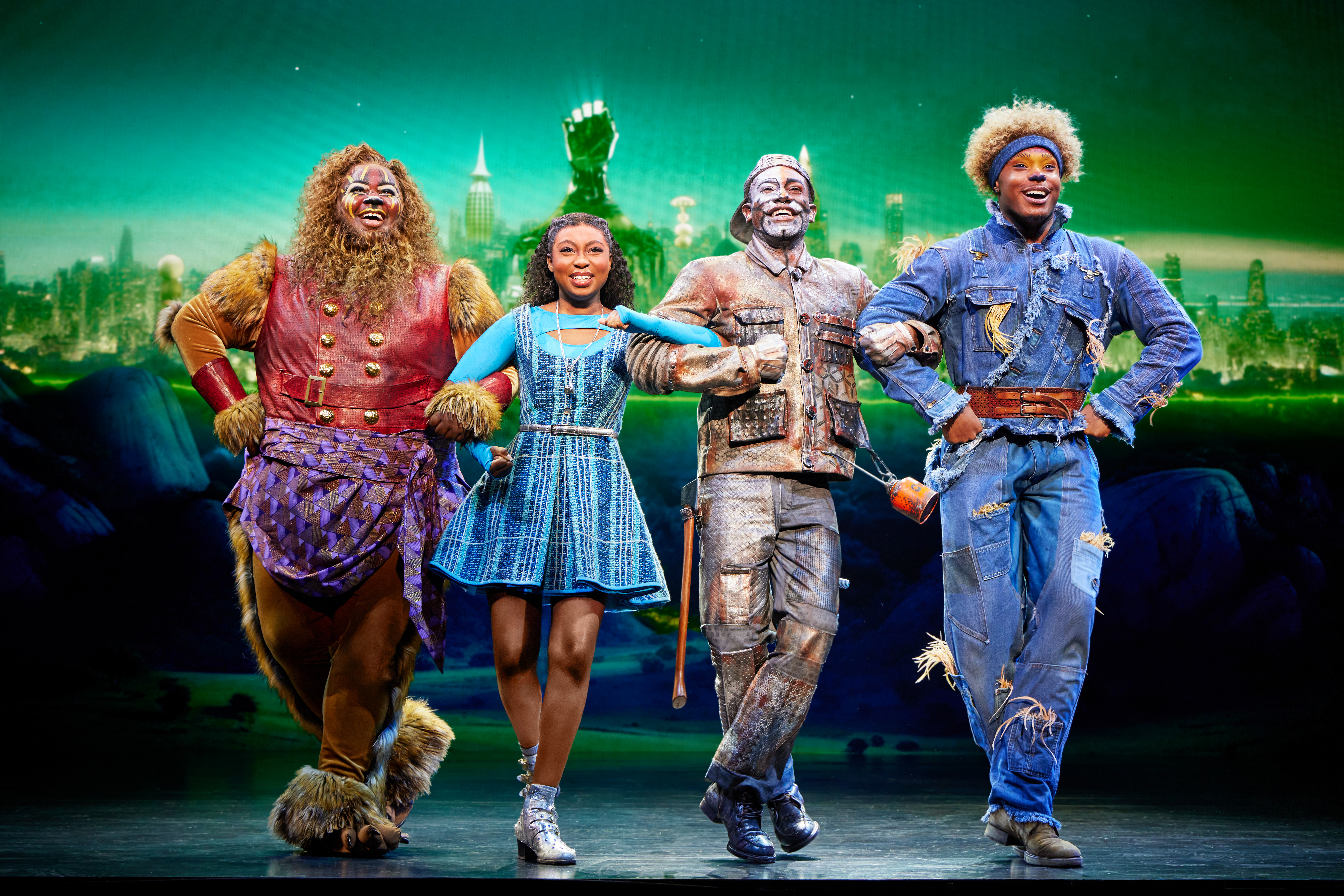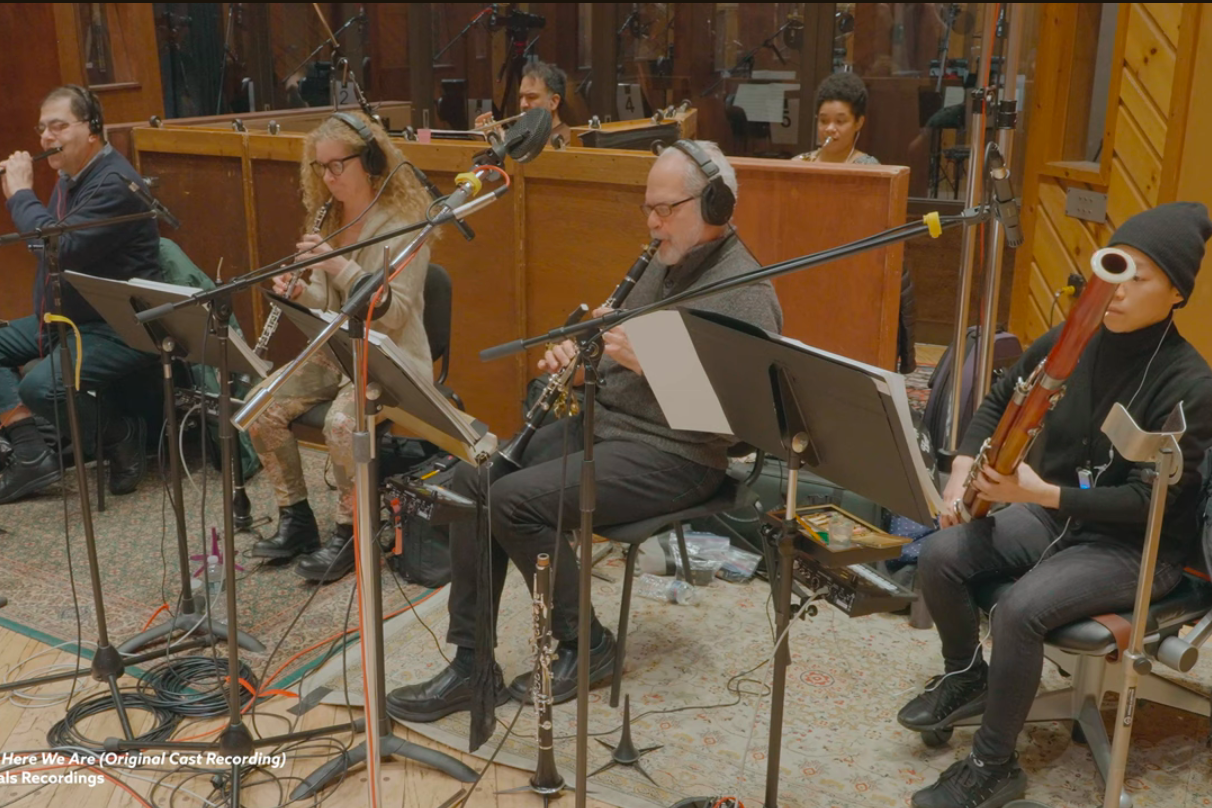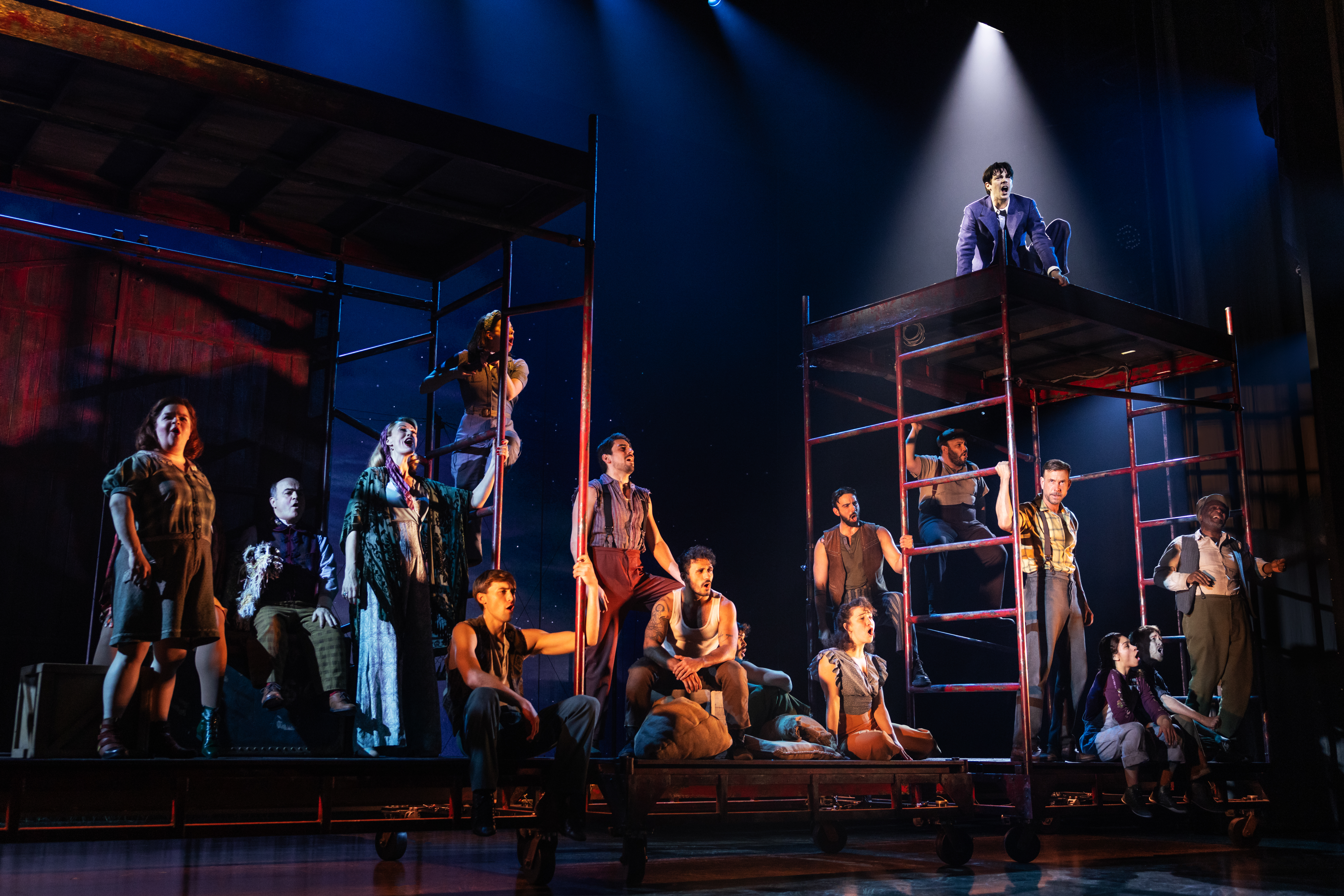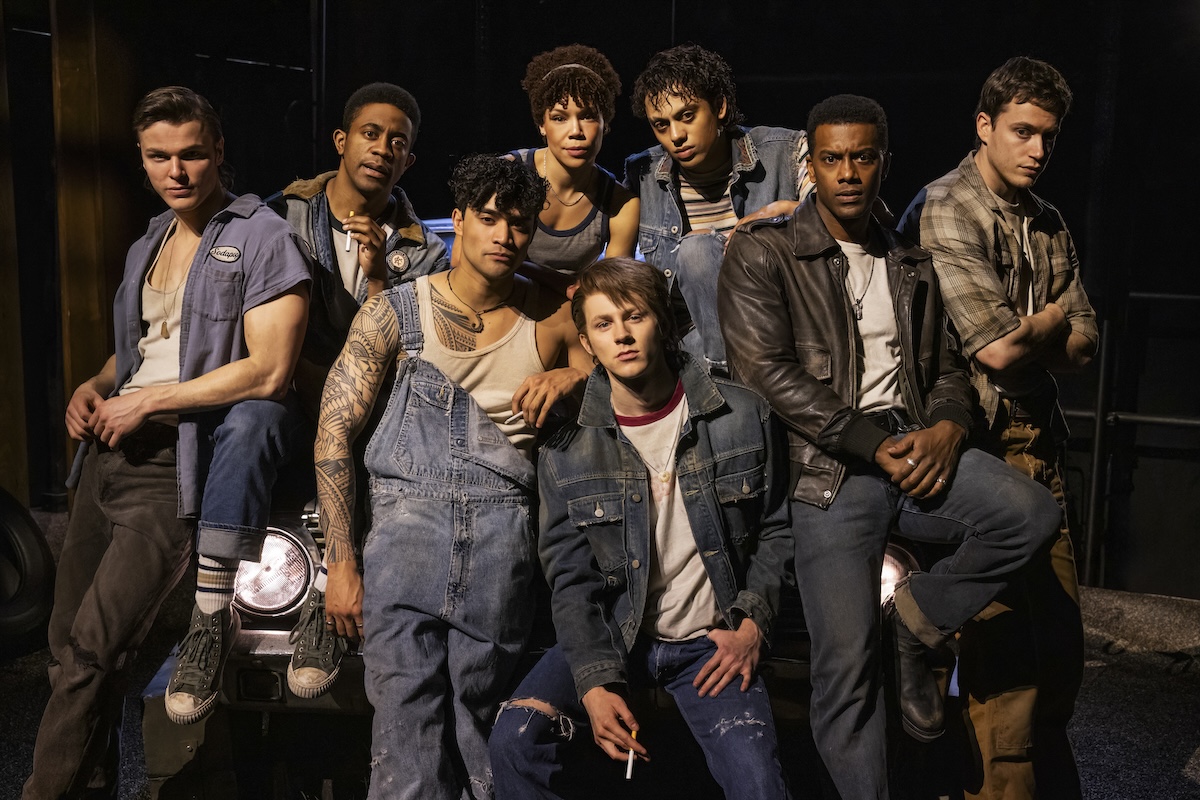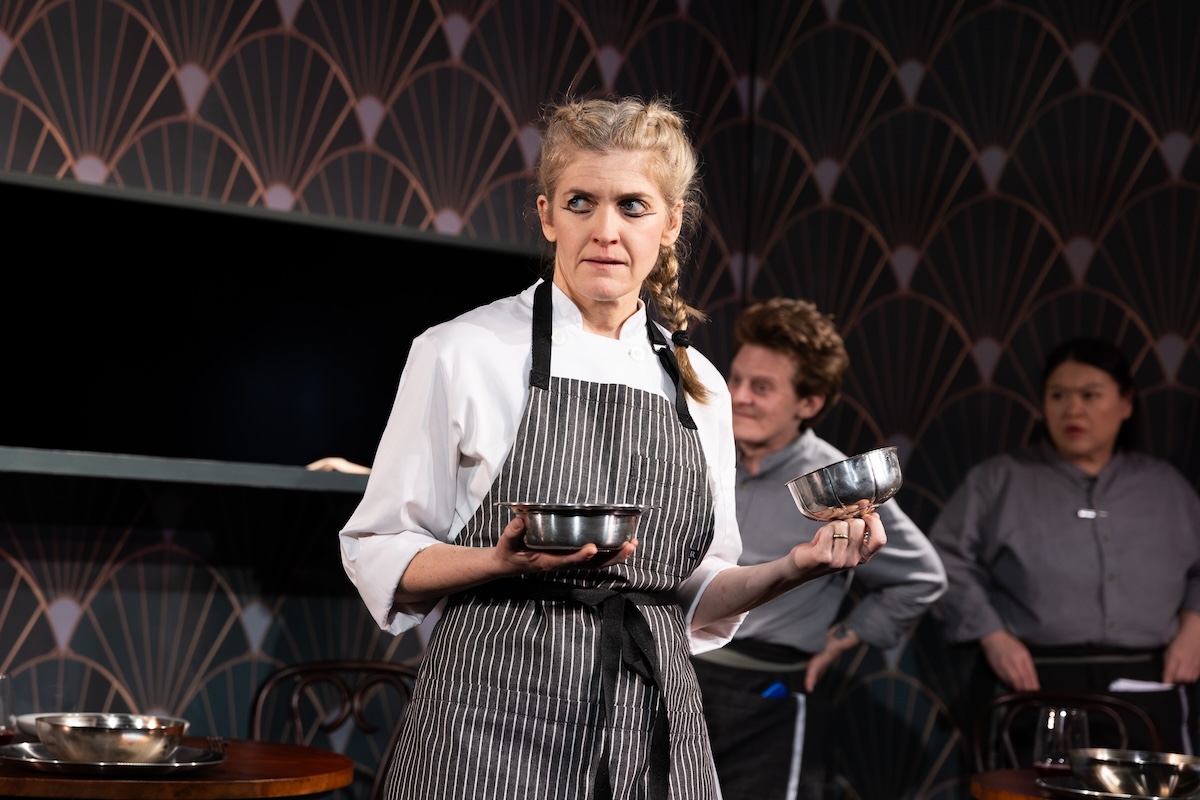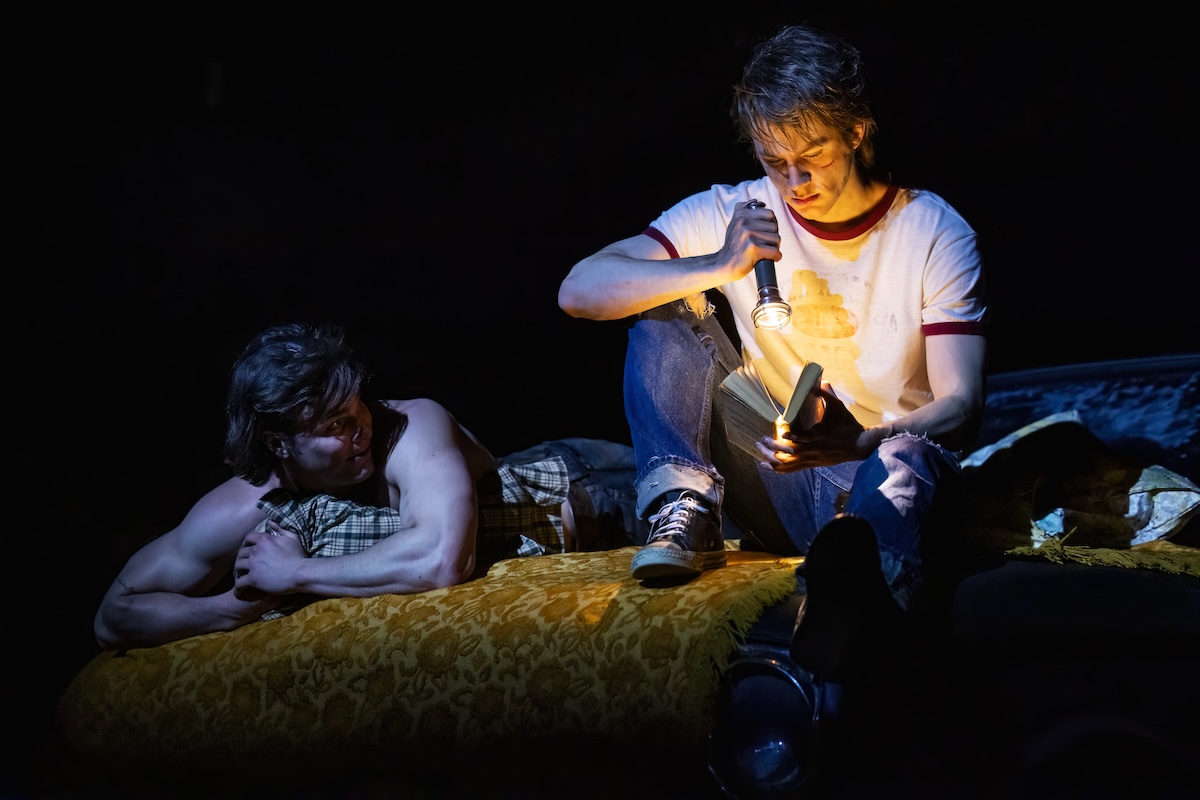For All the Women Who Thought They Were Mad Is an Onstage Anxiety Dream

(© Julieta Cervantes)
Nine months flash by in an instant in Zawe Ashton's For All the Women Who Thought They Were Mad, now making its US debut at Soho Rep. Rules of time and space don't seem to apply in this onstage nightmare about modern motherhood, which leaps for high anxiety and lands on high camp.
It's about the ironically named Joy (Bisserat Tseggai), a first-generation African immigrant in a high-pressure career. All of her scenes take place in the little cube of stress that represents her office (transparent scenic design by Daniel Soule): Her boss (Gibson Frazier) invades this human terrarium to tell her she is up for a promotion, while simultaneously sexually harassing her like they're reenacting a PSA from the '90s. A work rival (Nicole Lewis) bullies her before revealing her own desperation about illness and the lack of decent childcare. "It'll happen to you," she warns ominously.
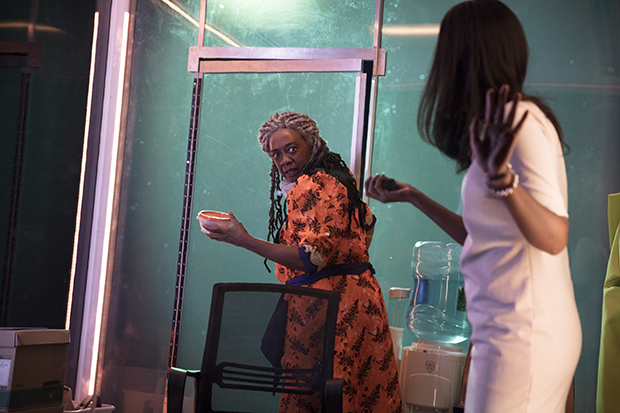
(© Julieta Cervantes)
One might think that Joy could look to the traditions of her homeland (referred to only as "the village") for guidance, but her mother (Stephanie Berry wearing a brightly colored, generically African costume by Andrew Jean) seems only to compound her mounting anxieties about balancing work and family life. "I've seen women give birth at their workplace, put the child in a basket and continue working," she tells her after Joy experiences a sudden and rapidly developing pregnancy. Pretty soon, Joy is channeling Faye Dunaway in Mommie Dearest as she screams at her babysitter (a palpably terrified Shay Vawn) to stay a little longer while she runs to a midnight work meeting.
The title, which in the program is styled in lowercase except for the word "Mad" and could have sprung from an online bot that generates experimental play names, suggests the prevalence of Joy's experience: The stress of being a career-focused upper-middle class woman leads many to feel crazy or angry or both. Unfortunately, what Ashton is passing off as universality is more often a lack of specificity: We're never quite sure what Joy's job is, and her work scenes (with accompanying talk about "numbers" and "paper work") are clearly written from the perspective of someone who has never worked in an office for a living (Ashton began acting at age 6, and is currently appearing on Broadway in Betrayal).
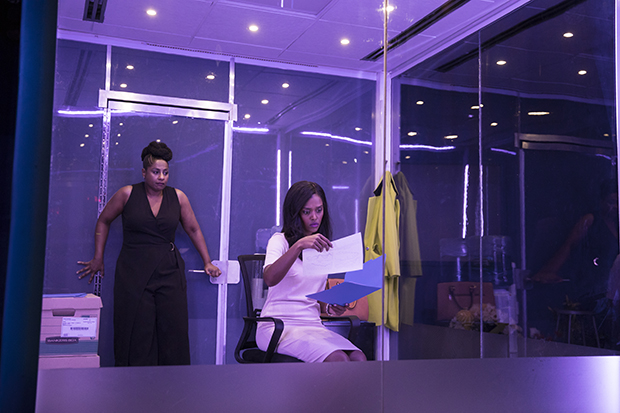
(© Julieta Cervantes)
The hazy rules of this world are straight out of a stress dream: Joy is late to sudden consequential meetings, she is impeded by inexplicably locked doors, and her hair falls out in clumps. When she discovers she is pregnant, her belly instantly swells like a party balloon. "It's eating me! Get it out," she screams like she's auditioning for a role in the stage adaptation of Alien. When her water breaks on her boss's wingtips, he harrumphs, "This is not standard practice by any means."
There is nothing subtle about this play, and the actors take their cues from the script in delivering overwrought, shouty performances. Ashton kindly gives us respite from the high drama during transition scenes with the other women (the aforementioned three, plus Sharon Hope, Blasina Olowe, Cherene Snow in minor roles; Olowe and Kat Williams alternate the role of 5-year-old Nambi at different performances). They float through the space around the cube and speak vaguely poetic words while nervously eyeing Joy. These are the segments in which some of the stagiest performances occur, and it is evident that not even the actors are entirely sure what they're talking about.
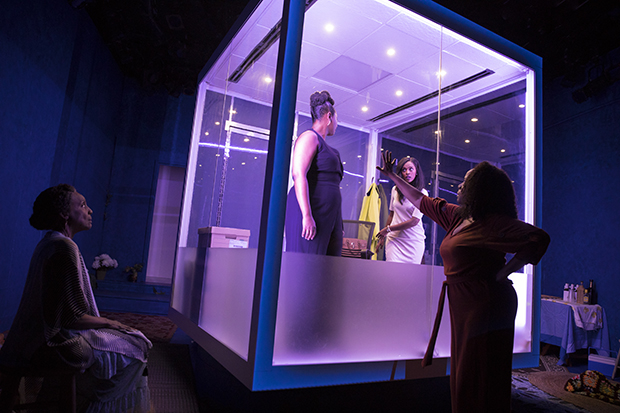
(© Julieta Cervantes)
But the bells and whistles of Whitney White's frenetic production trick us into believing it is something vital, magical, spellbinding…name your breathless adjective. Stacey Derosier's panic-inducing lighting evokes a horror film (scenes with the boss occur under a flickering florescent), while Lee Kinney's jarring sound keeps our ears pricked up by distorting the actors' amplified voices. Johnny Moreno adds to an already busy stage picture with his projection design, which bombards us with disturbing imagery.
Buried under the layers of spectacle and third-rate poetry is a genuine critique of the bourgeois brand of feminism developed and promoted by women wealthy enough to "lean in" as they hand their babies off to expensive nannies. Other plays have taken this school of thought to task more effectively (Wendy Wasserstein's The Heidi Chronicles comes to mind), but the melodrama of For All the Women is at least earnestly conveyed. It feels like a high-concept Lifetime movie made just in time for the Halloween season, in which "having it all" isn't so much an aspiration as it is an ancient curse left over from a lost civilization.



